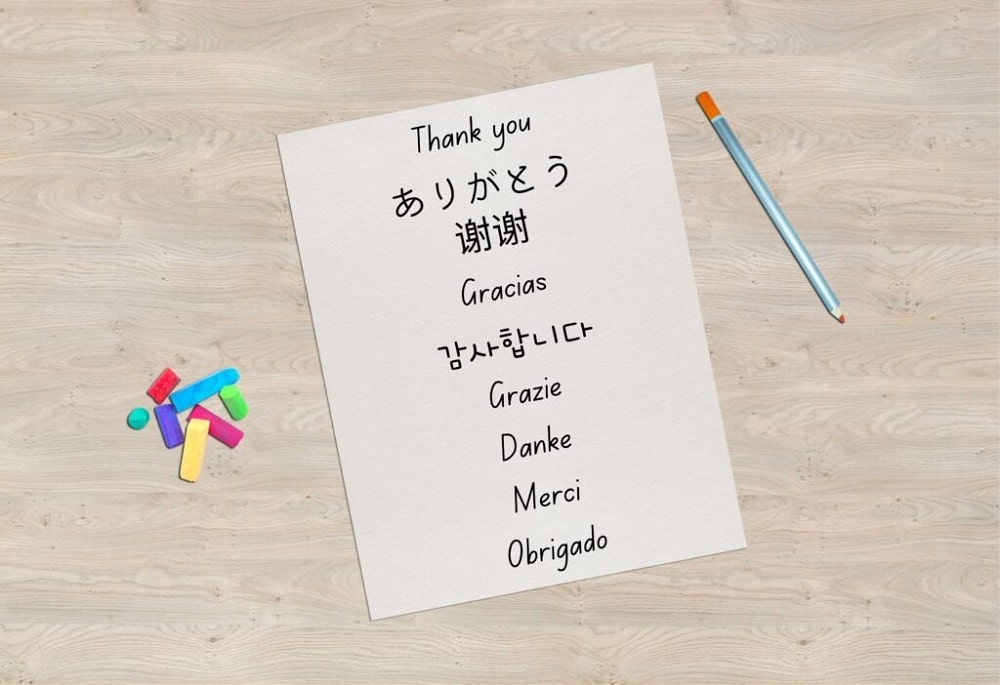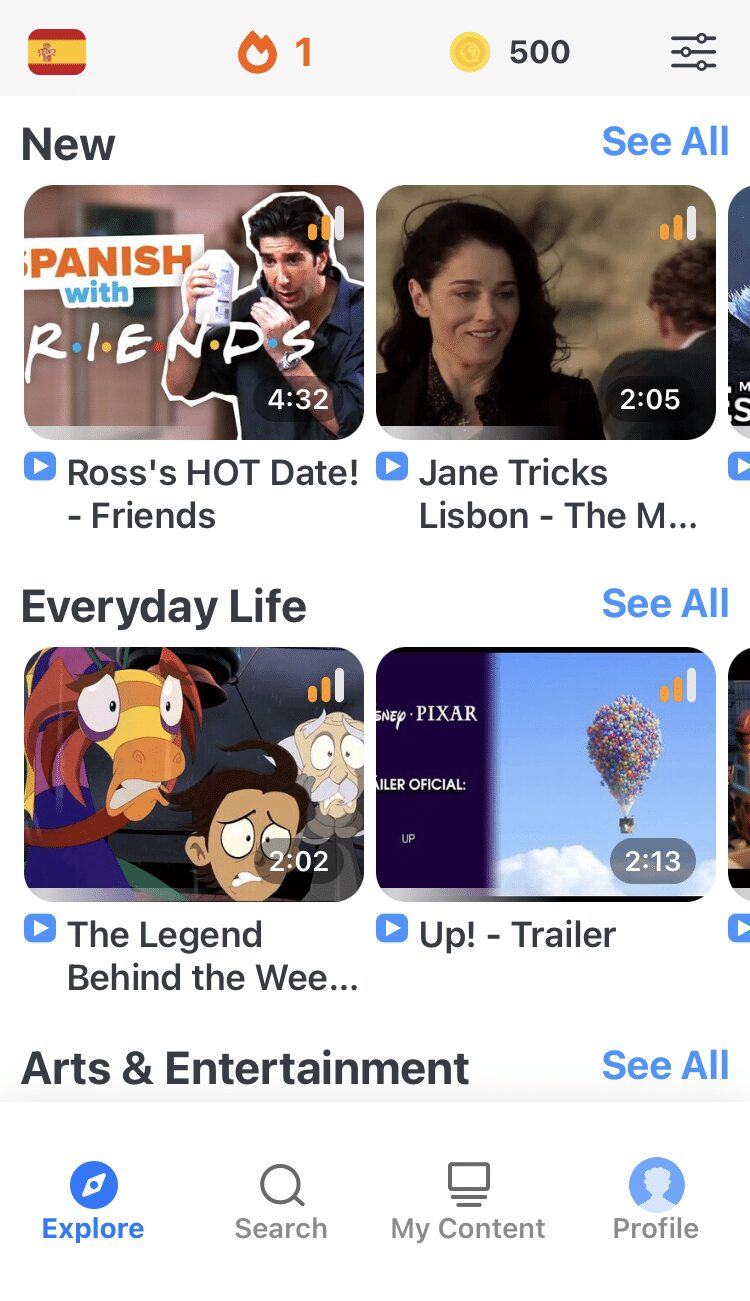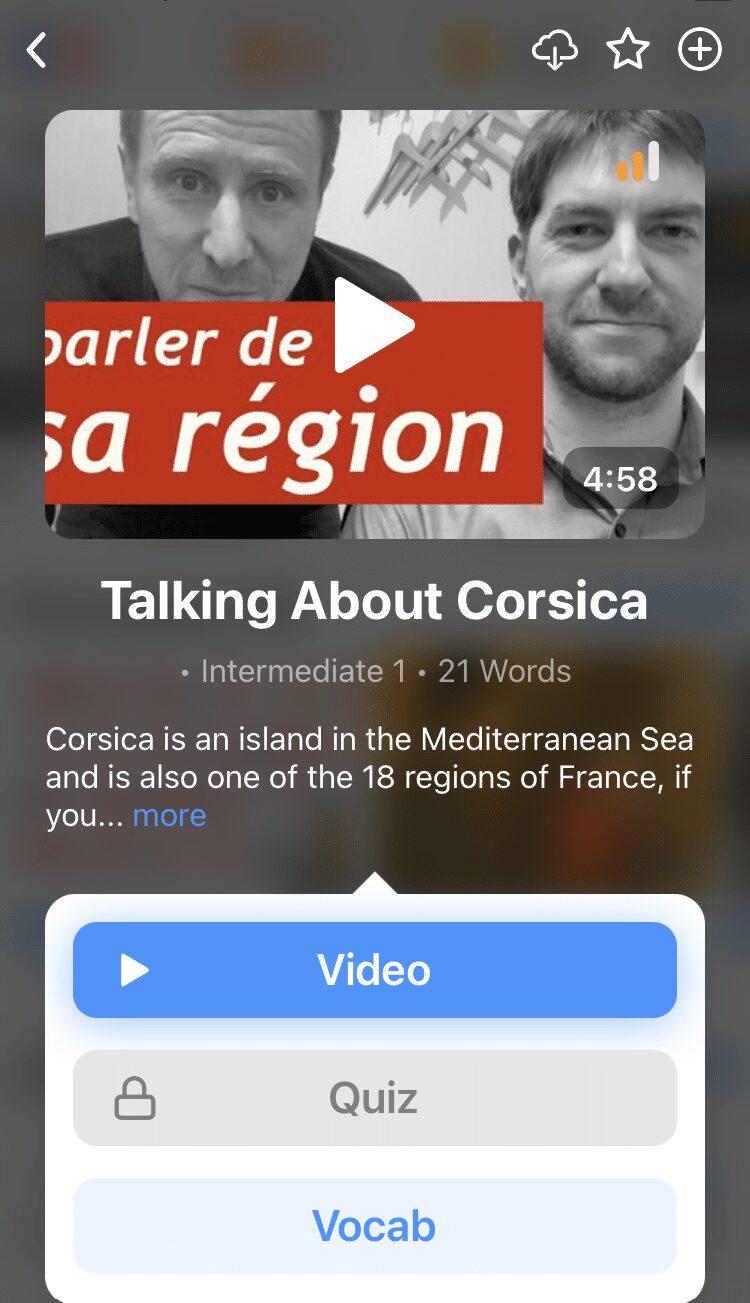Contents
- 1. Set vocabulary learning goals
- 2. Figure out what the most common words are
- 3. Use language proficiency test preparation materials to guide you
- 4. Write in your target language as much as possible
- 5. Talk to other people in your target language
- 6. Break out those flashcards
- 7. Read authentic texts in the language you’re learning
- 8. Listen to audio materials
- 9. Watch videos in your target language
- 10. Use a dictionary
- 11. Learn word parts
- 12. Embrace the “keyword technique”
- 13. Visualize and vocalize
- 14. Use the new words in your native language
- 15. Use your whole body
15 Best Ways to Learn Vocabulary in a Foreign Language

Learning 1,000 words in a foreign language can go a long way in helping you understand texts and communicate with people. Though research suggests that native speakers know about 15,000 to 20,000 word families, just the most common 800 words in a language like English can help you understand 75 percent of native material.
With a little strategy and the right tools, you can learn much faster and easier than you might have imagined. Follow these steps to get started and boost your foreign language vocabulary learning.
Download: This blog post is available as a convenient and portable PDF that you can take anywhere. Click here to get a copy. (Download)
1. Set vocabulary learning goals
The first step to learning effectively is to identify what you want to focus on and set goals.
If you have a strong interest in a particular subject, start with that. Perhaps you want to to read about soccer, which is called “football” in most countries outside the United States. Perhaps you want to learn how to cook like a native chef.
The most effective learners are motivated to study because they choose vocabulary based on their interests and needs.
If you have a more general goal, like being able to communicate with people that use your target language, it’s a good idea to focus on the words that are most commonly used in the language you want to learn.
2. Figure out what the most common words are
This is a good tip for anyone, no matter your particular interests.
Generally, there are four categories of vocabulary words in any language: high-frequency words, academic words, technical words and low-frequency words.
Unless you have a specific need to learn them, you can ignore academic, technical and low-frequency words. Focus on high-frequency words to quickly improve your ability to communicate.
If you search for the phrase “most common words in X language,” you’re bound to come across a good list of high-frequency words like this one in Spanish or this one in French.
3. Use language proficiency test preparation materials to guide you
If you’re studying a foreign language with the goal of passing a language proficiency test, you can also purchase the latest vocabulary textbooks geared toward readers who want to take the test at a certain level. These usually contain the first few hundred words that are most likely to show up on the test.
Of course, this method has its limitations, like the lack of context for the words you’ll be studying. But if you’re having a hard time coming up with a solid reason for studying a specific language or you think memorizing 1,000 words is a bit too intimidating, books that are meant to prepare you for language proficiency tests can give you a good place to start before you progress to more intuitive methods.
4. Write in your target language as much as possible
It’s more difficult to produce a word than it is to recognize it. That’s because it takes additional, concentrated practice to learn a word well enough to think of it and write it when you want to.
On an average day, you get much more practice reading words than writing them—whether in your native language or a language you’re trying to learn, and even if you’re super extroverted and talkative.
That’s why it’s important to seek out more opportunities for productive language practice, such as writing emails to friends or in a personal journal.
If you’re just starting to write in your target language, don’t worry too much about making mistakes for now. Your goal is to get used to writing as much as you can in the language you want to learn. Think about it: even in your native language, you tend to edit the words you write before you let anyone else see them. Why not apply the same principle to a language that’s completely new to you?
5. Talk to other people in your target language
The same logic I discussed above applies to oral communication, too. It’s easier to recognize a word when you hear it than to try to say that word out loud.
Talking to others in a conversation club or chatting with people who don’t speak your native language can help you practice speaking in your target language.
Compared to writing, speaking often has a more social aspect to it. That means you have the added benefit of having a native speaker correct your pronunciation, accent and grammar as you talk.
If you feel a bit shy about having one-on-one conversations in a language you don’t know, don’t fret! Use your phone to record yourself saying phrases out loud in the language you’re learning. Then, you can either compare yourself to native speakers saying the same phrase out loud or have a native speaker listen to your recording and get their feedback.
You can also check out guided conversations like polyglot Olly Richards’ Conversations course. The course is designed to help you set up workable, step-by-step systems for learning the most common phrases and words in your target language.
6. Break out those flashcards
Shuffling those good ol’ flashcards is one of the best ways to learn foreign language words.
Flashcards are efficient, flexible and make it possible to stagger your learning with a few minutes of studying here and there, adding up to big language gains over time.
You can use DIY paper flashcards (or store-bought index cards) or digital ones like Anki, StudyStack and Quizlet. The latter usually allow you to create your own flashcards and access flashcards other people have created, making it possible to find lists of useful words to study without creating the cards yourself.
Once you have your flashcards, it’s time to start studying! Here are some tips to get the most from this study method:
- Always take a moment to guess the meaning before turning the card over. Do this even if you not sure of the answer.
- Change the order of the cards. If you’re using a computer program, it will likely do this for you.
- Start by learning the words receptively. Look at the foreign word and try to identify its meaning in your native language. Once you’re comfortable with this, do it the other way around: start with the side in your native language and identify the corresponding word in your target language.
- Speak aloud as you practice. You learn words better when you speak rather than simply read them.
- Use spaced repetition. Gradually increase the amount of time between repetitions of a flashcard. Rather than spending 15 solid minutes reviewing your flashcards and not looking at them again for a week, it’s better to review them in shorter intervals each day or several times a day and to review them again every few days, increasing the amount of time between each repetition. You’re more likely to retain the material this way.
7. Read authentic texts in the language you’re learning
Pick up books and magazine or news articles in your target language, and read as much of them as you can. You can use an e-reader like Kindle, which allows you to highlight and translate words or look up their definitions as you read.
In case that sounds too tedious, you can always write down the word minus its translation on a piece of paper labeled “New Vocabulary List” and look up their translations later. That way, you’ll have all the difficult words in one place and you can study them all in one go whenever you have the time.
Also, here are other great strategies for reading in a foreign language smoothly.
8. Listen to audio materials
If you learn best by listening, you can also check out podcasts on language learning as well as audiobooks in your target language.
Here are some tips on learning a language using audio:
- Whenever the speaker is talking too fast, hit “Rewind” or set the audio to play at a slower speed like 0.5x.
- Make a timestamp of the places where you encountered the difficult word (e.g., 2:09, 5:13).
- Pay close attention to the way the speaker sounds out the word.
- If the word still sounds too fast or unclear, type it into Google plus “pronunciation” and toggle the “Slow” button.
What I just described to you is a form of active listening. If you want to learn more about what that is, here’s an article on additional language listening tips.
9. Watch videos in your target language
Online videos, TV shows and films can also help you learn your target language in context. Not only are you going to hear how the words are pronounced, but you can also pick up on subtleties like the body language that accompanies the words.
For example, you can use a program like FluentU, which is made especially for this.
With FluentU, you hear languages in real-world contexts—the way that native speakers actually use them. Just a quick look will give you an idea of the variety of FluentU videos on offer:

FluentU really takes the grunt work out of learning languages, leaving you with nothing but engaging, effective and efficient learning. It’s already hand-picked the best videos for you and organized them by level and topic. All you have to do is choose any video that strikes your fancy to get started!
Each word in the interactive captions comes with a definition, audio, image, example sentences and more.
Access a complete interactive transcript of every video under the Dialogue tab, and easily review words and phrases from the video under Vocab.
You can use FluentU’s unique adaptive quizzes to learn the vocabulary and phrases from the video through fun questions and exercises. Just swipe left or right to see more examples of the word you're studying.

The program even keeps track of what you’re learning and tells you exactly when it’s time for review, giving you a 100% personalized experience.
Start using the FluentU website on your computer or tablet or, better yet, download the FluentU app from the iTunes or Google Play store. Click here to take advantage of our current sale! (Expires at the end of this month.)
10. Use a dictionary
Use a dictionary to look up:
- Unknown words you read or hear
- Translations for words you want to learn
- How to spell a word
- How to pronounce a word
- Grammatical information
You can use print dictionaries (which are often published by reputable companies but get quickly outdated) or online dictionaries (which are easily accessible and have additional features like audio for pronunciation, but may not always be reliable).
You can also choose between a bilingual or monolingual dictionary. Bilingual dictionaries are the easiest way to learn new words. On the other hand, monolingual dictionaries often provide more grammatical information and examples of a word in context. It may be helpful to use a combination of both dictionaries, or seek out a bilingual dictionary that has more thorough grammatical and contextual information.
11. Learn word parts
One of the most effective ways to improve your ability to predict the meaning of new words is to break down those words into digestible components.
This process is less familiar to language learners than learning whole words and is best used after you’ve developed a substantial vocabulary of whole words. If done right, it can give you the ability to guess the meaning of new words without looking them up, greatly increasing your comprehension of the language.
Word parts include the stems that give a word its general meaning, as well as affixes that modify the grammatical form or structure of the word and provide important information about its exact meaning.
An example of a word stem in English is -STRUCT- which means “to build.” It’s the root in words like “structure” and “construct.”
This stem is also used in words like “destruction,” “instructive” and “obstruct.” Each word has a different meaning, but you can see how they all relate to a general sense of “building.”
Affixes are also useful in predicting the meaning of a word. In English, these include prefixes like “de-” and “non-” as well as suffixes like “-ment” and “tion.”
Knowing what these affixes mean can help you understand that “destruction” is a noun (the suffix “-tion” tells you this) that means to tear something down—the opposite of “building,” as you can see from the prefix “de-.”
This approach requires that you find sources for information about word parts in your target language. For example, the book “Leveraging Your Russian with Roots, Prefixes and Suffixes” provides students of Russian with a thorough source of word parts to study.
Online sources like About.com’s “Building Your Vocabulary: Prefixes” provide word parts to study in Spanish, while lists of Greek and Latin roots can help you learn these languages or learn English words derived from these languages. There are also many sources of information about Arabic word roots, which function slightly differently but use the same general concept.
12. Embrace the “keyword technique”
One of the best ways to learn new vocabulary is to use mnemonics or memory aids. The “keyword technique” is a great example of this.
Essentially, you make up a story using the new word, the meaning of the word and a word in your native language that sounds similar.
For example, if you want to learn the Turkish word ev, which means “house,” you might think that it sounds like the English word “every.” Your story might be something like, “I’m in my house every day.”
13. Visualize and vocalize
When you learn a new word, take a moment to visualize an image of the word’s meaning and say the word out loud. Repeat this as many times as you can until the image and the word become one and the same in your mind.
If you’re thinking this sounds silly, think back to your childhood when your English teacher was teaching you the alphabet using phrases like “A is for apple,” along with a picture of an apple. This is essentially the “visualize and vocalize” method, except you’re more intentional about it now.
14. Use the new words in your native language
Practice the new words not only in your target language but also in your native language.
For example, if you’re learning the Spanish word pescado (fish), you might say things like “I will buy el pescado at the market later.”
Make sure the way you use the word in your native language is similar to the way it’s used in your target language. Otherwise, you’re going to pick up bad habits like using the word in an ungrammatical way.
If this feels unnatural, it might interest you to know that people who grow up learning two or more languages tend to mix up these languages in their everyday speech in a phenomenon known as code-switching.
15. Use your whole body
Research shows that the brain learns better with sensory inputs like physical actions. If you’re learning the word for “ball,” try making a ball with your hands and pretending to throw it as you repeat the word aloud.
You can also incorporate nonverbal gestures if they make sense for the particular language you’re studying. For example, if you’re learning filler words, you can observe how native speakers draw out their equivalent of “Uhh…” and copy that.
Learning vocabulary takes practice and time, but it can be rewarding and fun. With the right methods and techniques, you can speed up your learning enormously.
As you learn, don’t forget to look back on your notes or flashcards to remind yourself how much you’ve already learned and how far you’ve come. And remember to practice the new words you learn in context!
Download: This blog post is available as a convenient and portable PDF that you can take anywhere. Click here to get a copy. (Download)








